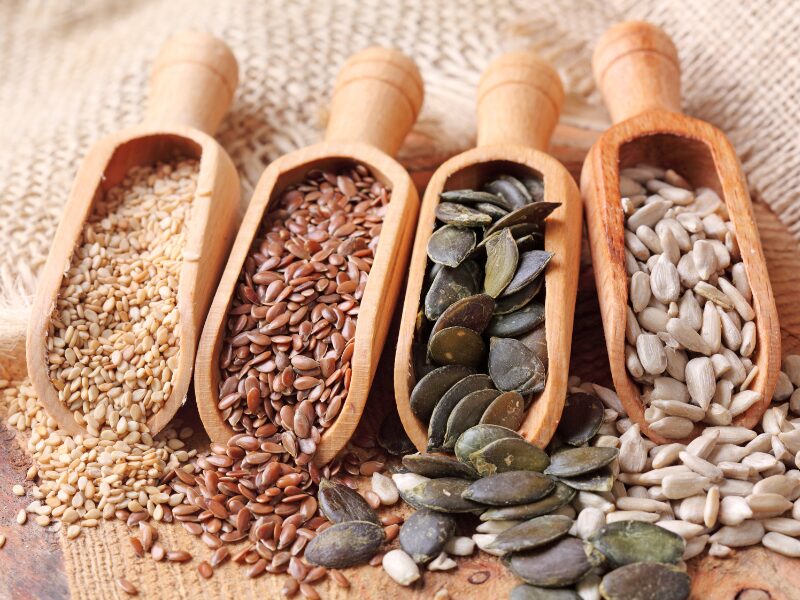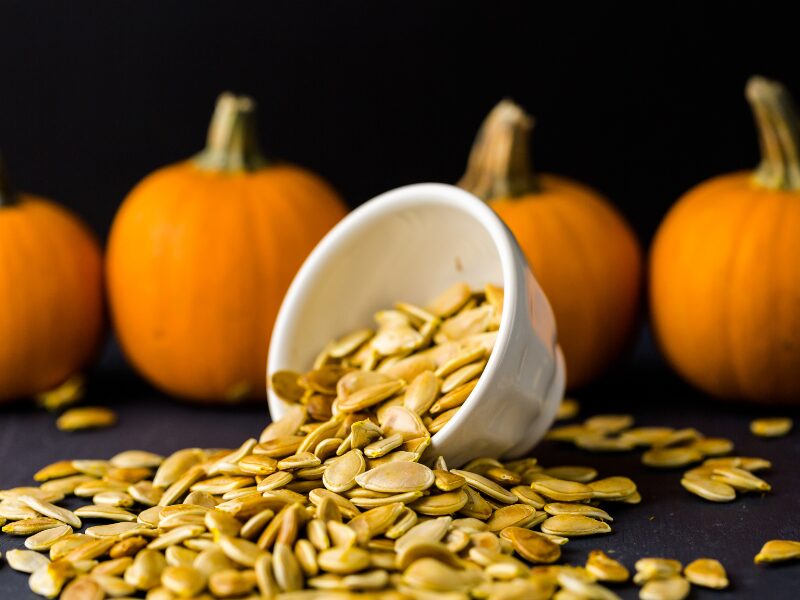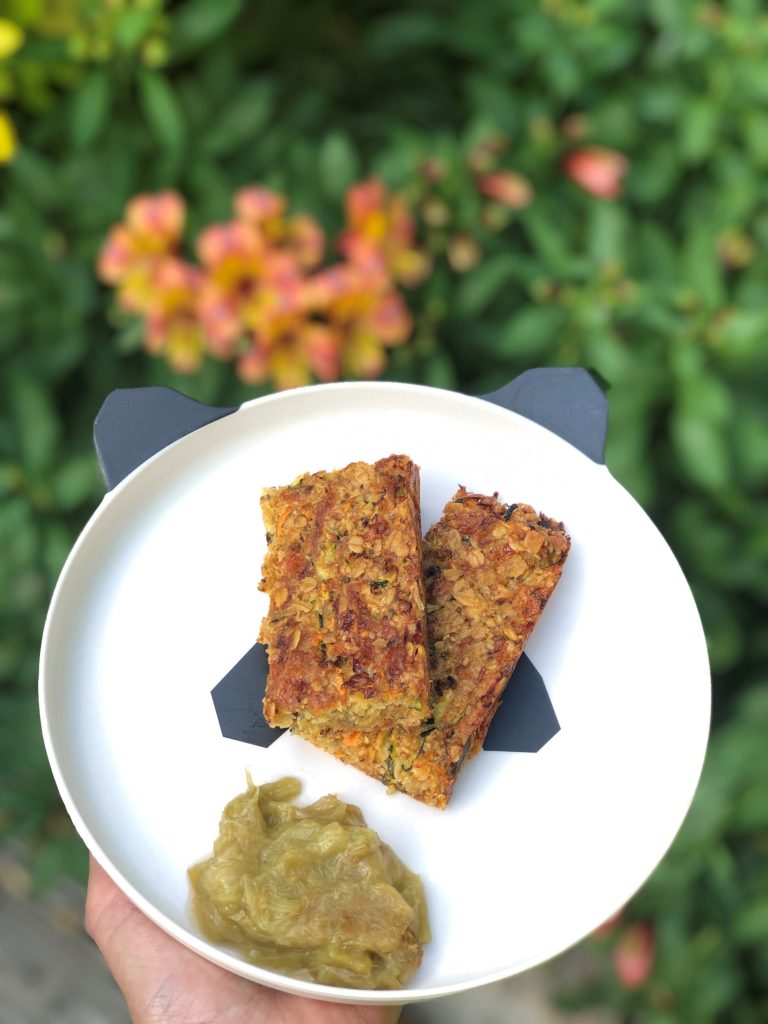I get asked all the time about seeds for babies and toddlers. We hear that they’re brilliant for us adults, but what about for our little ones? It can feel a bit confusing. Are they safe? Which ones are best? And how on earth do you even serve them to a baby?!
Seeds are a food I’m a huge fan of, and they can be a fantastic addition to your little one’s diet right from the start of weaning. So, let’s break it all down and learn about these tiny nutritional powerhouses for our kids!

Why are seeds so brilliant babies and toddlers?
Don’t be fooled by their tiny size! Seeds are absolutely packed with nutrients that are vital for growing babies and toddlers. Think of them as tiny nutritional powerhouses, each offering a nutritional boost to your little one’s meal.
Here’s a breakdown of what they provide:
- Healthy fats (especially Omega-3s) Seeds like chia, flax, and hemp are some of the best plant-based sources of an essential omega-3 fatty acid called ALA. This is a crucial “brain food” – our bodies use it as a building block for brain tissue and eye development, especially during these rapid growing years. They also provide concentrated energy, which is perfect for busy toddlers.
- Fibre Seeds are a brilliant source of fibre, which is fantastic for supporting a healthy gut. Fibre helps to feed the good bacteria in their microbiomes and also adds bulk to their poo, which can be a real help in keeping those little tummies regular and preventing constipation. Just a note that TOO much fibre also isn’t ideal for little ones – for more detail on fibre for babies and children, check out my blog.
- Plant-based protein Protein is an essential building block for pretty much everything in a growing body. It’s vital for your child’s growth, helping to build and repair their muscles, skin, and even their immune cells. Adding a sprinkle of seeds is an easy way to boost the protein content of any meal.
- Key vitamins & minerals Seeds can provide a range of vitamins and minerals that can sometimes be hard to get into little ones’ diets, including:
- Iron: Important for carrying oxygen around the body to give them energy and for supporting brain development.
- Zinc: A key nutrient in supporting the immune system, helping to fight off bugs and heal scrapes.
- Magnesium: Works with calcium for building strong bones and is also important for muscle function.
- Vitamin E: A powerful antioxidant that helps to protect their cells and keep their immune system strong.

My top seeds for giving to babies and toddlers
- Chia seeds: A fab source of omega-3s and fibre. They absorb liquid and turn into a gel, which makes them great for ‘chia pudding’ or thickening yoghurts.
- Flaxseeds (or linseeds): Another good source of omega-3s and fibre. These are best served ground as they can be more difficult to digest whole, meaning we might miss out on some of the benefits when they are whole.
- Hemp seeds (or hemp hearts): These have a lovely soft texture, a slightly nutty taste, and are a great source of protein and omega-3s.
- Sunflower & pumpkin seeds: A great source of vitamin E and zinc.
- Sesame seeds: A fantastic source of calcium and iron! We most commonly see this served as tahini (sesame seed paste which is a key ingredient in hummus), and sprinkled on bagels.
How to serve seeds SAFELY to babies and toddlers
This is the number one concern for most parents! Whole seeds can be a choking hazard for babies and young children.
Just like whole nuts, they are small, hard, and can be easily inhaled or get stuck – especially those like pumpkin and sunflower seeds. We generally advise avoiding whole seeds (and whole nuts) until your child is at least 5 years old.
So, how CAN you serve them?
The safest and best way to offer most seeds is finely ground. You can buy packs of seeds already ground. Or, if you have whole seeds, you can use a small coffee grinder or a blender to blitz them into a powder. You can even make a little “seed mix” (e.g., flax, hemp, and pumpkin seeds) and keep it in an airtight container in the fridge for a few days.
Seed butters are another brilliant option! Think of smooth sunflower seed butter or tahini (sesame seed paste). Just like nut butter, always serve it spread thinly on toast or crackers, or swirled into porridge or yoghurt. A thick blob of seed butter can also be a choking risk.
Soaking is another option to help soften seeds – especially seeds like chia, which will naturally soak up liquid and become soft, which is a better option when offering.
A note on chia seeds…
I get asked ALL the time about whether chia seeds are safe for babies.The main thing to know is that chia seeds are hydrophilic – which means they absorb a huge amount of liquid (up to 10-12 times their own weight!).
Because of this, babies shouldn’t have dry chia seeds on their own in large amounts or by the spoonful. The risk is that if they ate a clump of dry seeds, the seeds could swell up in their throat or oesophagus after coming into contact with saliva, forming a thick, clumpy gel that could pose a serious choking risk. It’s not happened in practise that I know of (with babies or toddlers), but it is a potential choking risk, so best avoided. Add chia seeds into foods and stir them in when offering. A small scattering on top of porridge etc is fine.
But please don’t let this put you off! Serving them safely is super simple. You just need to make sure they have “activated” or soaked up their liquid before your baby eats them. Generally add chia seeds into foods and stir them in before offering. A small scattering on top of porridge etc is fine.

Safe serving methods:
Here are the safest and easiest ways to include chia seeds for babies and toddlers:
- Soak them first: This is the best and most common way. Simply stir a teaspoon or two of chia seeds into a “wet” food like yoghurt, a fruit purée, or some milk. Let it sit for at least 5-10 minutes. You’ll see it thicken up into a lovely, gel-like pudding. This is now perfectly safe and ready to serve.
- Stir them into wet meals: It’s also absolutely fine to sprinkle a small amount (e.g., half a teaspoon) of seeds directly into a very wet and/or warm meal, like porridge, Weetabix, or a pasta sauce. Just make sure you stir them in well and that there’s plenty of liquid in the dish for them to absorb.
- Grind them: Just like with flaxseeds, you can blitz them in a blender or spice grinder into a fine powder. You can then sprinkle this powder into pretty much anything – cereals, sauces, bakes – without any worry about the gelling or choking risk.
A quick note on allergies
Seeds are a great food to offer, but it’s important to know that sesame is one of the UK’s top 14 allergens.
Just like with any other common allergen (like peanuts, eggs, or milk), it’s best to introduce sesame one at a time, in a small amount, and early in the day so you can monitor for any reaction. The very first time you’re offering it, start with a tiny amount of tahini (e.g., 1/4 teaspoon) swirled into yoghurt or porridge, and gradually build up the amount over a few days. For more on introducing allergens when weaning, check out my blog.
How much should I offer?
With seeds, a little goes a long way!
They are very nutrient-dense, so you don’t need to overdo it. Start with about half a teaspoon to one teaspoon of ground seeds stirred into their meal.
Because they are so high in fibre, introducing too much too quickly can sometimes cause a bit of a tummy upset or some loose nappies for sensitive tummies. As with everything in weaning, just start small and build up gradually. For more about fibre and how much to offer children, I’ve got a really detailed blog all about it!

My favourite ways to add seeds
The best thing about ground seeds is that they are so simple to sprinkle into meals your little one is probably already having.
- Stir 1-2 teaspoons of ground seeds into porridge or overnight oats.
- Blend them into a smoothie.
- Swirl a little tahini or smooth sunflower seed butter into yoghurt or hummus, or use it as a salad dressing
- Sprinkle ground seeds into pasta sauces, stews, curries or even mashed potatoes/veg.
- Bake with them by adding ground seeds to homemade muffins, pancakes, flapjacks or energy balls.
- Make a simple chia pudding by mixing 1-2 tablespoons of chia seeds with around 100ml of milk (dairy or fortified plant-based) and leaving it to set in the fridge.
- Sprinkle them on top of toast toppings
- Roll soft veggies in them to help add grip as well as nutrition
- Use them as an egg replacement in baking. Simply take 1tbsp of milled seeds and mix with 3 tbsp warm water and let it sit for about 5min to thicken up.
- Use seed oils – e.g. Rapeseed oil is a good source of monounsaturated fats! Check out my blog on seed oils for children for more on this.



For more family-friendly recipes that include plenty of different ways to include seeds, check out my books:
- How to Wean Your Baby
- How to Feed Your Toddler
- How to Feed Your Family
- The Ultimate Weaning and Toddler Cookbook
My takeaway
Seeds are a truly fantastic food to offer your baby or toddler, packed with healthy fats, fibre, and minerals.
The key is simply to remember to serve them safely and in an easily absorbed way. That generally means finely ground or as a smooth, thinly-spread butter.
I hope this helps you feel confident to give them a try!